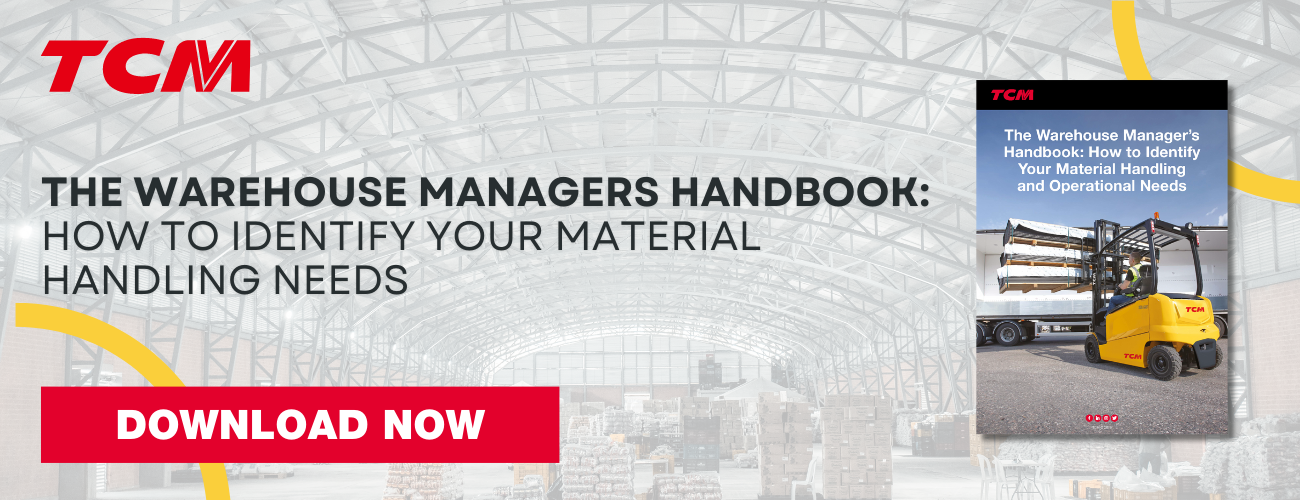Share Article
When you’re operating heavy machinery on a daily basis, the risk of danger, injury or error is ever-present. The key to a hazard-free, fully functioning work environment is understanding the correct safety measures and operational requirements that you need to facilitate your workforce. This is particularly important when it comes to electric forklift trucks.
Whilst there is a diverse range of forklifts available today, electric forklift trucks are becoming increasingly popular in material handling operations. Why? Because they have impressive economic and environmental benefits for businesses, including increased energy efficiency, lower fuel costs, ease of use, reduced CO2 emissions and a lower TCO (total cost of ownership).
Whether you’re running one electric forklift truck or an entire forklift fleet, your warehouse needs a designated forklift charging station. That means as with all types of heavy equipment use, companies need to ensure that those operating forklift trucks or working near them are safe. Companies who are keen to implement this technology in their warehouses must ensure they have a dedicated battery charging area fitted with the necessary safety features to meet forklift charging station power requirements.
Technology is constantly advancing. The material handling industry is no different. Do more than stay up to date; evolve with these 6 material handling trends.
Read on to discover the 4 recommended forklift battery charging station requirements.
4 forklift battery charging station power requirements explained
1. Ensure correct fitting
Your charging points need to be fitted correctly. That means guaranteeing that your chargers are mounted in a way that is safe, secure and completely accessible.
To do this, you first need to locate an accessible area with a wall where the chargers can be securely mounted. For safety and compliance reasons, all chargers also must be fitted with emergency stop breakers to provide a way for the flow of electricity to be stopped immediately if or when needed.
Another important issue to factor in is hanging wires. Ensure chargers are mounted at the appropriate height and wires are no longer than a metre in length to avoid a significant tripping hazard for operators.
The final point to consider when assuring correct fitting for multiple units is space: leave at least a one-metre gap between each forklift truck. Doing so will make it so the vehicles are always accessible to operators.
2. Prevent warehouse damage
Fit acid-resistant flooring to prevent damage to the warehouse floor. This is particularly significant when dealing with batteries as there are numerous ways that they can leak. From rare manufacturing defects or damage to the cell, releasing these hazardous chemicals can result in real damage to the immediate area as well as potential damage to your workforce operators.
This is entirely preventable by installing acid-resistant flooring.
In addition to protecting your warehouse, specialist flooring ensures that leaks are easier to clean up, which will save you time and money in the long run.
Being aware of charging station power requirements is key to operational success, but you need to stay informed about forklift servicing and maintenance, too. Here are 5 tips to keep you on the right track.
3. Access to safety equipment
Ensure safety equipment is easily accessible at all times. Forklift accidents can be fatal.
Basic safety equipment should be readily available in your charging station area, alongside more specialist equipment to protect your workforce in the event of an incident such as an accidental acid spill.
Take fire extinguishers, for example. A warehouse fire is a feasible threat that warrants the presence of a fire extinguisher. This piece of safety equipment should not only be easy to access, but it also needs to be suitable for use in electrical fires. Considering the safety and financial implications of a warehouse fire, installing a fire extinguisher is a small price to pay to protect the long-term well-being of your workforce and overall operations.
As electric forklift batteries are a potential burn hazard, forklift battery charging stations need to include a readily available emergency shower and eyewash station just in case an operator comes into contact with battery acid.
Along with preparing for and preventing workplace hazards, creating a culture of health and safety is key. Learn more here.
4. Provide adequate ventilation
Charging forklift batteries produces hydrogen gas, which is difficult to detect and extremely dangerous. That makes ventilating your charging area an essential part of operator safety.
Of course, it’s not enough to just open a couple of windows. To properly mitigate this, air quality should be frequently monitored to certify that hydrogen levels remain below 2% at all times.
Providing adequate ventilation to your workhouse is easy to achieve through building openings and exhaust fans. Nevertheless, ventilation is arguably one of the most vital safety features your charging station needs to provide and guarantee in order to keep your workforce safe.
Are you ready for 2030? Take a look at this electrification readiness checklist to discover 5 ways to plan and prepare for the future.
Don’t wait: to ensure operator safety tomorrow, you need to future-proof your charging station today.
Electric forklift trucks come with a range of operational, environmental, and cost-saving benefits, including considerably lower CO2 emissions than their diesel forklift counterparts. However, they also come with potential risks and hazards that you need to be aware of to ensure the safety of your team and operational efficiency.
For businesses currently using any number of electric forklift trucks, or for those thinking of introducing a full fleet, it’s vital that you have the required forklift charging stations in place to meet demand and that your charging facilities are up-to-date and entirely comply with safety and operational standards.
By implementing the 4 forklift charging station power requirements discussed in this article, you can be sure that your warehouse charging station is a safer and more efficient environment for the operators using it every day.
If you have any questions or would like some advice about forklift battery charging, we’re happy to help! Get in touch with your local TCM dealer today.

.png?width=50)


.jpg?width=50)